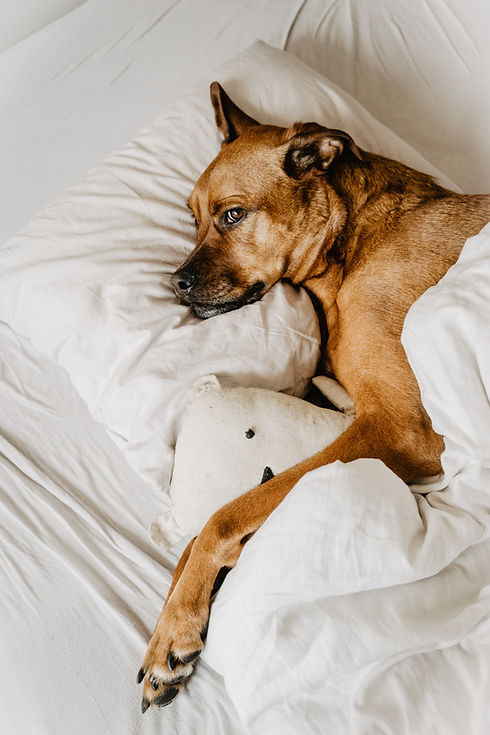Canine Physiotherapy
In the veterinary industry, canine physiotherapy techniques are being more widely recognised and utilised to complement current veterinary treatments to treat a wide range of conditions, musculoskeletal and neurological.
Physiotherapy for dog's can aid and stimulate the healing process post-injury, improve balance and strength in compromised tissues to help restore overall function and mobility.
My services are completely mobile, and the sessions can be conducted in the comforts of your own home. I always strive to make the sessions as positive as possible for your dog, which is stress free.
Signs your dog may benefit from physiotherapy:
-
If your dog has a musculoskeletal or neurological condition diagnosed and referred by your vet.
-
Reduced activity levels; lethargy
-
Behavioral changes, more subdued than usual
-
Reluctance to perform certain movements (jump up/into car or onto the sofa)
-
Struggles to sit square; one leg often placed out to the side
-
Favoring lying down on a particular side
-
Trips/scuffs paws
-
Gait abnormalities
-
Vocalisation (yelping)
-
Slows down on walks
-
Excessive panting on a walk (not associated with running around/or heat)
-
Hunched posture
-
Reduced weight bearing on a particular limb/ altered weight distribution
-
Reduced coordination (proprioception)
-
Weakness
Prior to all initial consultations, I require a signed referral by your veterinary surgeon


Applications
Physiotherapy is most beneficial for dogs which have:
-
Undergone surgery/had an injury/or developed a musculoskeletal condition.
-
Neurological problems, by supporting muscles and joints, to limit the negative impacts associated with not being able to move functionally.
-
Osteoarthritis. The arthritic patient can be managed using a multi-model approach, which coordinates an effective management programme with your vet to ensure your dog has the comfort and quality of life they deserve for as long as possible.
Physiotherapy is also beneficial for dogs to improve and maintain performance:
-
In the agility/showing dog, to correct musculoskeletal imbalance to improve performance and success at competitions.
-
In the working dog, to ensure your dog can work optimally throughout their working career.
Treatments
Manual therapy techniques
-
Massage
-
Myofascial release
-
Joint mobilsations
-
Passive joint range of motion
-
Stretching
Eletrotherapeutic modalities
-
Pulsed Electromagnetic Field Therapy
Exercise Therapies
-
Weight redistribution
-
Active joint range of motion
-
Strengthening
-
Dynamic joint mobilisations
-
Dynamic stretches
-
Gait re-eductation
-
Proprioception enhancement

.png)